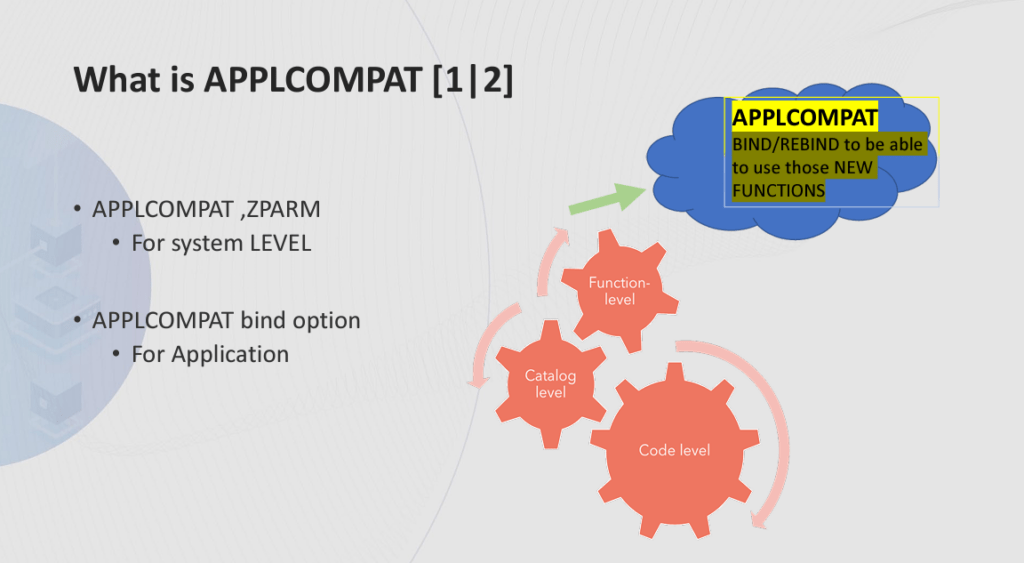Last month we heard from Leila Hosseini, Senior DBA,DB2 for z/OS, as she presented Db2 Level up.
In today’s rapidly evolving technological landscape, staying up-to-date with software advancements is crucial for businesses to thrive. In the world of databases, IBM Db2 stands as a widely used system that offers a range of functionalities and features. With the introduction of continuous delivery, IBM has revolutionized the way Db2 is updated and enhanced. In our recent session with Leila Hosseini, we delved into the concepts of continuous delivery for Db2 and application compatibility, discussing their significance and how they could be effectively managed. We explored the world of Db2’s continuous delivery, its impact on developers and application DBAs, and the crucial role of application compatibility.
Understanding Continuous Delivery:
Traditionally, IBM released new versions of Db2 every three to four years, packed with numerous changes and functionalities. However, with the adoption of continuous delivery in Db2 12, IBM introduced a more agile approach. Db2 is now updated multiple times a year, with each update introducing smaller changes and new features. These updates are delivered as code changes and fixes through PTFs (Program Temporary Fixes) for the target libraries of Db2. System administrators play a vital role in maintaining these libraries to ensure the availability of the latest Db2 code.
Code, Catalog, and Function Levels:
Db2’s continuous delivery revolves around three essential levels: code level, catalog level, and function level. Code level represents the state of the Db2 libraries, which can be higher than the catalog level and function level due to continuous maintenance. Catalog level refers to the adjustments made in the Db2 catalog and directory, necessary to activate new function levels. Function level signifies the introduction of new enhancements and features in Db2. Developers and applications can only consume functionality up to the activated function level, providing control over functionality deployment.
The Role of Catalog and Function Levels:
Catalog level changes are crucial for activating new function levels. They involve adding columns to tables in the Db2 catalog or making adjustments in the directory. Once the new function level is activated, applications and DBAs can leverage the new features and enhancements introduced by Db2, ranging from SQL statement improvements to optimization techniques. By understanding the catalog and function levels, developers and DBAs can better navigate the continuous delivery process and harness the full potential of Db2.
Application Compatibility and Managing it:
Application compatibility, also known as APPLCOMPAT in Db2, enables applications to leverage the new features and enhancements introduced in different function levels of Db2. By activating a specific function level, developers and application DBAs gain access to a plethora of new capabilities. To effectively manage application compatibility, it is crucial to understand the current APPLCOMPAT level the package or program is working with. Static packages can be rebound using the APPLCOMPAT keyword, while dynamic packages can utilize the “set current application compatibility” command.

Conclusion:
In conclusion, continuous delivery has revolutionized the way Db2 is updated and enhanced, offering smaller updates more frequently. By understanding the concepts of continuous delivery, including code, catalog, and function levels, developers and DBAs can make the most of Db2’s capabilities. Moreover, application compatibility plays a vital role in enabling applications to leverage new features. By effectively managing application compatibility and staying informed about the latest APPLCOMPAT levels, organizations can seamlessly transition to higher function levels and ensure the smooth operation of their applications. Stay at the forefront of Db2 technology, maximize database efficiency, and enhance your knowledge and career with these valuable concepts.
Amanda Hendley is the Managing Editor of Planet Mainframe and host of the Virtual Mainframe User Groups. With a career rooted in the technology community, she has held leadership roles at the Technology Association of Georgia, Computer Measurement Group (CMG), and Planet Mainframe. A proud Georgia Tech graduate, Amanda spends her free time renovating homes and volunteering with SEGSPrescue.org in Atlanta, Georgia.



